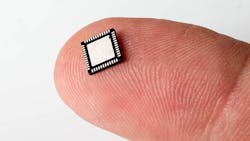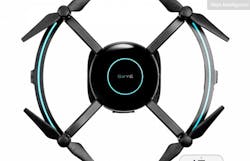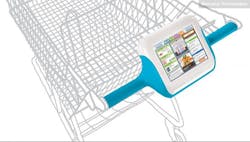6 of the Coolest Uses of Micro-location Technology
GPS and service like Google Maps have transformed how people get around, but they have accuracy limits. GPS, for instance, is typically has a resolution measured from roughly 3 to 15 meters.
By contrast, the company DecaWave (Dublin, Ireland) has developed a low-power wireless transceiver that can detect indoor-tagged objects to within 10 cm.
The technology uses ultra-wideband (UWB) technology described in IEEE’s 802.14.4a standard.
The high resolution is helping to enable a plethora of applications. While the technology can be used to offer indoor navigation, the potential applications of ultrawideband are vast in scope, as illustrated in this feature.
1. Finding Things—Whether in a Warehouse or at Home
Indoor positioning systems can be used similarly to GPS systems outside. For instance, a warehouse can be mapped helping guide automatic guided vehicles or human workers looking to identify parts, tools, or pallets spread throughout the building. Also, Czech company Sewio GetVu has developed navigation technology for warehouses that guides workers to identify all of the goods needed to fulfill an order.
Earlier this year, Bosch demonstrated how ultra wideband technology can be used for track-and-trace applications with 10-cm accuracy at Bosch Connected World. The prior year, the resolution Bosch had for this application was in the range of 8–10 meters.
2. Detecting Car Parts and Cars on Parking Lots
The potential automotive applications of micro-location technologies begin with streamlining manufacturing. Sometimes, a carmaker will build a car and everything finished but for one part, say, a seatbelt. Micro-location technology can make locating the car much easier.
This capability can also be used within automotive manufacturing facilities to locate tools, spare parts, and workers used to assemble the car.
3. Auto-Following Drones
Some high-end drones have a follow-me function, which can come in handy if you want to use the drones to shoot video of yourself. Until recently, most of these drones used facial recognition and form recognition technology with high-resolution cameras.
The technology, however, often is associated with a high price tag. It is not always accurate either; if there are a lot of people around, the drone can get lost and lose track of you.
Microlocation technology can be used to replicate the functionality of technology at a lower price point with greater accuracy.
The technology was featured in a recent Kickstarter campaign for a project from Skye Intelligence Technology.
4. Preventing Accidents
Micro-location Technology has significant potential for preventing accidents. Cyclists or pedestrians equipped with an ultrawideband tag could communicate with connected cars that are as far as 200-m away to help avoid collisions. The same basic principle can be used within manufacturing facilities to prevent forklift accidents. Employees with tags could communicate their position to connected forklifts. If workers get too close to the forklift, it will automatically stop.
5. Making Hospitals Safer and More Efficient
Waste and inefficiency continue to be significant problems for the healthcare industry. While it can be difficult to quantify the problem, a recent study summarized that medical errors were the third-leading cause of death in the United States. While that figure is uncertain, there is certainly a need for cutting down on mistakes. Micro-location technology can help clinicians keep track of assets, ensuring that the right products are used with patients. The technology can also be used to guide staff doctors and nurses as quickly as possible and can be used to optimize patient flow.
6. Retail Applications
Ultrawideband technology is also well suited for retail applications. “We also have a customer in Taiwan who is deploying a robot that is a shopping assistant,” Viot says. “When you got to the shop, it will launch a do-it-yourself shopping function. You can pick your robot, and it will guide you to the objects that are on your shopping list.”
Apart from shopping assistance, the technology could be helpful for retailers as it could help them study shoppers’ patterns when browsing in the store. “They can use this to optimize the floor layout,” Viot says.
See more cool applications at the Internet of Things Institute -- a new NED companion site at Penton.
About the Author

Brian Buntz
Pharma/Biotech Editor, Pharmaceutical Processing World - WTWH Media LLC
Brian Buntz is a former B2B tech journalist and content director for IoT World Today. He has expertise in writing and editing content, and editorial strategy, with a focus on a range of topics including cybersecurity, artificial intelligence, and the industrial sector.


